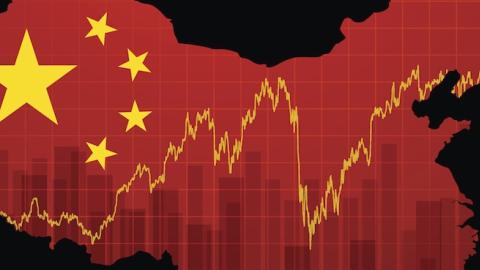Not so long ago, China’s politics appeared an economic virtue, including for many in the Australian business community. There were even strong hints of China-envy in the air, the idea that authoritarian leaders could simply identify problems and fix them. No need to deal with interest groups, sceptical media, economically illiterate population or an obstructionist Senate. They were left alone to be technocrats and economic engineers par excellence.
That was the myth that played into Beijing’s hands. And only recently has it become obvious that a bit of technical tinkering here, and heavy-handed regulation there will no longer fix the country’s economic problems. It is now not just about the true economic growth rate in China, which is certainly much lower than official numbers, or whether targets will be met. The country’s leaders, and even the authoritarian China model are increasingly under scrutiny.
All economies have ups and downs. So why pick on China’s, especially given what has been achieved since 1979? Much praise ought to be granted to its leaders for policies in the 1980s and 90s which were predominantly about helping the domestic private sector to thrive. The problem is the returning dominance of the state sector, which only took place from early this century onward and which is the basis of the country’s worsening problems now.
Take China’s property bubble. It emerged largely as a government driven response to the global financial crisis from 2008 onward which devastated China’s advanced economy export markets.
From 2009 on, Beijing responded in a way only possible in authoritarian political economies, with the largest fixed investment stimulus in history. State-owned banks were forced to lend predominantly to state-owned enterprises (SOEs) to build more things for the sake of politically-motivated headline growth, the result being ghost cities and enough empty residential housing to meet the country’s urbanisation needs for decades. Whereas fixed investment contributed 20-25 per cent of GDP growth in the 1990s, it was behind 90 per cent of growth in 2009 according to World Bank figures.
Flushed with cheap credit created out of the savings of its citizens in the coffers of state banks, SOEs then made a killing by on-lending money to the credit starved private sector at exorbitant rates, with private and SOE firms in turn using overvalued assets as collateral for more borrowing. From 2008-2014, new credit flooding the economy increased by more than $US20 trillion, exceeding the size of the entire American commercial banking sector by one and a half times.
And with so much free money around, and the government desperate to slowly deflate the property bubble, it was inevitable that excess capital would pour into the stockmarket rather than go back into deposit accounts offering zero real return.
When panic selling took hold, as was inevitable in a stockmarket with valuations more exuberant than any since the Japanese exchange in the late 80s, the government was again typically ham-fisted: forcing listed companies and SOEs to buy stocks, banning institutional investors from selling shares in a falling market, censoring bad financial news, and arresting “unpatriotic” private bloggers offering bearish viewpoints in investor forums. Paradoxically, such heavy-handedness has only increased the sense of stockmarket unease and panic.
The point is that these ad hoc fixes are being applied to stabilise and perpetuate a model that is designed to enhance wealth and opportunity for the dominant state sector at the expense of households and individuals. Receiving next to nothing for depositing savings in state-owned banks, individuals and households are effectively subsidising the inefficient commercial activities of some 140,000 SOEs enjoying privileged access to the most important and lucrative sectors in the economy. Many millions of private sector firms pay usurious borrowing rates from the so-called shadow banking sector and are left to do the best they can in a system engineered to ensure they come off a distant second best behind the state sector.
All the while, fixes applied are only making things worse. For example, Beijing has delayed the repayment of trillions of dollars of maturing debt incurred by wasteful and incompetent local government SOEs since 2008. This is being achieved through forcing lending institutions to roll over maturing loans, and forcing state-owned banks and other SOEs to buy local government corporate bonds. True, this will prevent SOEs from defaulting, thereby staving off insolvency.
But to what better end? Bad companies deserve to fail as “creative destruction” in successful and innovative economies insists. That SOEs in China are rarely allowed to only exacerbates the moral hazard: encouraging even more risk taking and inefficient investment, and worsening the debt burden. As it stands, one in every three new dollars borrowed by SOEs goes towards managing existing debt. Since the majority of borrowing in China’s state-dominated economy is by SOEs, this is hardly a constructive use of national wealth.
So it is obvious that liberal-democratic economies have their problems. But unlike these democracies where the balance between government on the one hand, and the private and household sectors on the other, is far more equal as is opportunity. In contrast, the majority of Chinese people have no chance to grow rich before they grow old. Achieving that would require a radical transfer of national wealth and opportunity away from SOEs to the rest of the economy.
But doing so would imperil the authority and relevance of the Communist Party and propel China toward a path of economic and political liberalisation experienced by now rich East Asian countries such as Japan, South Korea and Taiwan. So an ever more elaborate patchwork of authoritarian responses continues to disempower and remove opportunity for ordinary Chinese citizens by the day as the Party tightens its grip in the face of loss of control.
Taking the bigger picture view, perhaps the chaos of liberal-democratic political economies are preferable after all.



















